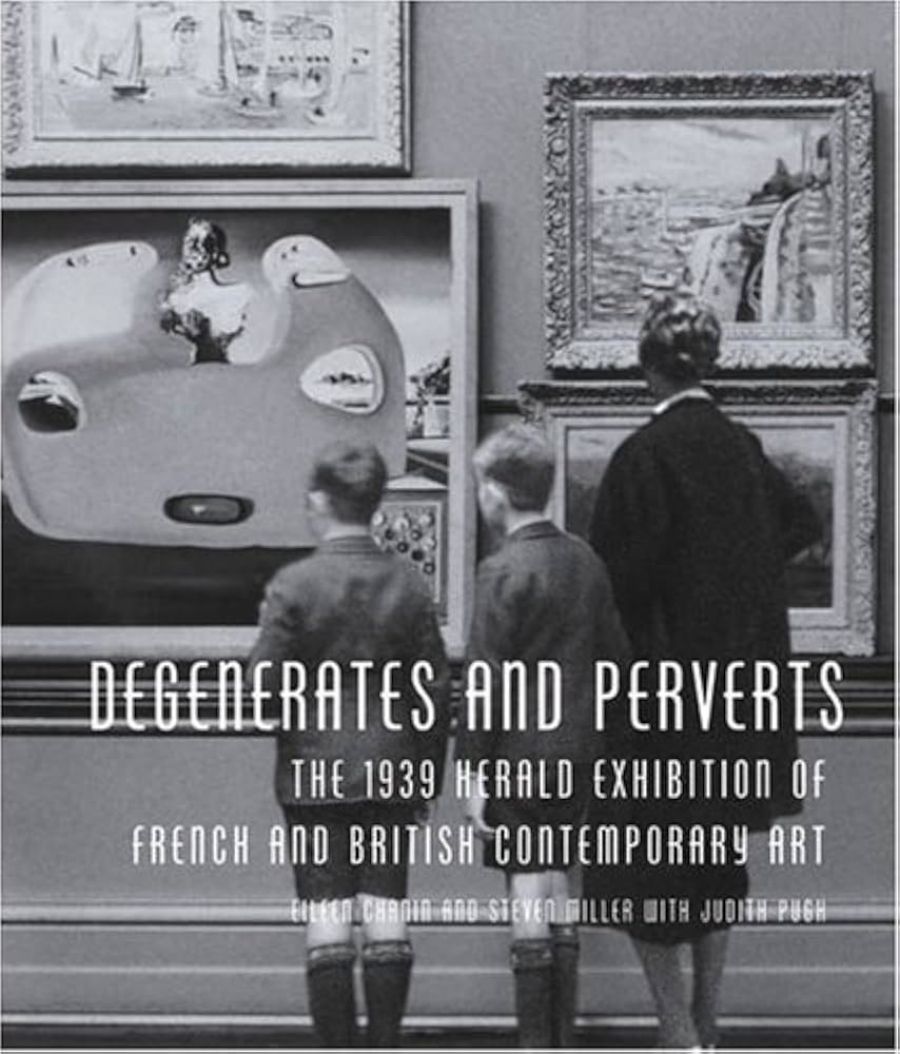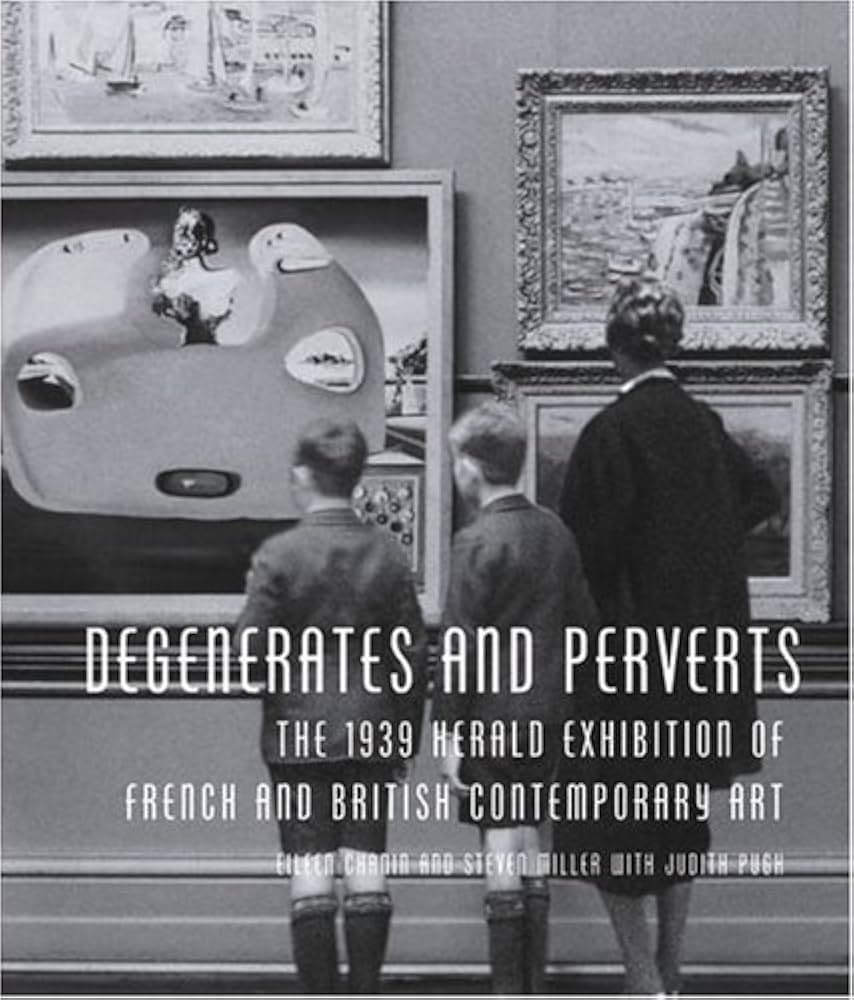
- Free Article: No
- Contents Category: Art
- Review Article: Yes
- Article Title: The best from abroad
- Online Only: No
- Custom Highlight Text:
In the 1930s the notorious art critic and gallery director J.S. MacDonald felt it was his patriotic duty to protect Australia from the morally suspect culture of Europe, where, he exclaimed, ‘the pictorial symptoms of the degeneracy of France [is] enfeebled by the rule of functionaries, and … Mittel Europe [is] crushed and torn between Nazi, Bolshevist and Fascist megalomaniacs’. Not a man to mince words, MacDonald also expressed his horror of what was arguably Australia’s first blockbuster exhibition, the 1939 Herald Exhibition of French and British Contemporary Art, suggesting that it was the work of ‘degenerates and perverts’. As the then Director of the National Gallery of Victoria, MacDonald was a man of influence, and his outspoken views were transmitted widely.
- Book 1 Title: Degenerates and Perverts
- Book 1 Subtitle: The 1939 herald exhibition of French and British contemporary art
- Book 1 Biblio: Miegunyah Press, $69.95 hb, 306 pp
- Book 1 Cover Small (400 x 600):

- Book 1 Cover (800 x 1200):

The exhibition was mounted in all states except Western Australia and attracted a total of more than 70,000 visitors. People were eager to see for themselves just what it was about modern European art that was causing such a fuss. The urbane art dealer and critic Basil Burdett was selected as the exhibition organiser by Keith Murdoch, Editor-in-Chief of the Melbourne Herald (the exhibition sponsor) and trustee of the National Gallery of Victoria. Burdett’s curatorial mission was to select the ‘best from abroad’. With only five months to arrange everything, Burdett managed to secure the cooperation of museums, private collectors, dealers, critics and art societies across Europe, drawing on his own considerable connections and those of Murdoch. The resulting show comprised 217 works, mainly paintings, but with a sprinkling of works on paper and sculptures by French luminaries – Picasso, Matisse, Gauguin, van Gogh, Bonnard, Vuillard, Toulouse-Lautrec, Cézanne, Modigliani, Léger and Dalí, among others – and a smaller number of British artists who are slightly less well known today: Walter Sickert, Stanley Spencer, Ben Nicholson, Graham Sutherland and Paul Nash, to name a few. The aim of the exhibition was to provide the Australian public with an overview of modernist art during the previous seventy-five years.
The 1939 exhibition has frequently been mentioned in Australian art histories. Yet, as the authors of a new publication point out, it has also been the subject of numerous misconceptions and inaccuracies, which have been compounded by time. In Degenerates and Perverts: The 1939 Herald Exhibition of French and British Contemporary Art, Eileen Chanin and Steven Miller have aimed to straighten the record by researching in depth this extraordinary event – what exactly was in it, where the works are now, where and when it was shown, how many people visited, how it was received – incorporating their findings into a vital new history of Australian modernism between the wars. The impressive result is an excellent piece of scholarship that combines a wealth of art historical detail with an engaging and intelligent narrative, and a handsome production.
While a similarly controversial exhibition of French Post-Impressionism had opened in London almost thirty years earlier (prompting Virginia Woolf to exclaim that ‘… on or about December 1910 human character changed’), on the eve of World War II Australian audiences had rarely been exposed first-hand to the radical advances in art that had been taking place since the late nineteenth century. As Chanin and Miller argue in their book, the time was ripe for change and the Australian public hungered for it (although, as with MacDonald, for many visitors the exhibition simply confirmed their deeply held suspicions about the antics of foreign artists in modern times).
The exhibition opened, and was generally well received, in Adelaide, where, as the book argues, society was more open-minded than in the more conservative cities to the east. But it was Melbourne where Murdoch’s publicity machine went into overdrive, and which attracted the highest crowds (variously cited as 45,000 or 48,000). In Sydney, once it had been shown at the David Jones’s Art Gallery, the outbreak of war prevented the exhibition from being shipped back to Europe. Rather, a selection of works was lent to the Art Gallery of New South Wales for display. When Gallery Director Will Ashton and his trustees decided after several months that the more conservative permanent collection needed to replace the European works on display, and the latter were relegated to storage, an almighty row broke out in the daily press about the value of modern art and the competency of the Gallery’s Director and its trustees. Degenerates and Perverts demonstrates that the exhibition was a powerful catalyst for cultural change across Australia and tells its compelling story against a rich social and political backdrop.
While the book contains insights that are new to Australian art scholarship and should be commended for its comprehensive use of primary sources (including many oral histories), it rarely acknowledges important secondary sources, apart from in its comprehensive bibliography. For example, the important work of Mary Eagle and many others over the last fifteen years is overlooked when the authors incorrectly say: ‘… the 1890s and the innovations of the Heidelberg school of painters are seen as the golden age of painting. Little else is thought to have happened until a revival occurred after World War II.’ While that may once have been the case, it is not generally accepted to be the case today. The other main weakness of the book is the introduction by Judith Pugh, which required tighter editing. A personal recollection of the exhibition could have provided a more compelling introduction to a history whose living links with the present are rapidly dwindling.
The art historian will find the book’s appendices fascinating reading, particularly the annotated catalogue, an ambitious project which has been meticulously crafted with an archivist’s eye for detail (Steven Miller has been the archivist at the Art Gallery of New South Wales for many years). Where possible, each work has been carefully traced to its current location, and full catalogue details (and in many cases a colour photograph) are provided. With three-quarters of the works for sale during the exhibition (and many of them now in some of the great public collections around the world), it is clear that Australia’s state galleries largely missed out on a great opportunity to acquire works by some of Europe’s best avant-garde artists, works that they now could not afford. Adelaide, Sydney and Melbourne bought works by Spencer, Henry Tonks, Sickert and André Derain among others, but on the whole the works that stayed in Australia’s public collections tended to be safe and conservative. The best works – Cézanne’s portrait of his wife, for example, or the Modigliani nude – got away.
Degenerates and Perverts is filled with wonderful photographs of the exhibition’s original displays (dense by modern standards), its catalogues (brief and simple), satirical drawings from the press, artist’s sketchbooks and portraits of the story’s main protagonists, many of which are accompanied by lively captions. It deals with the exhibition as a genuinely national event, rather than simply focusing on its reception in Sydney and Melbourne, as is so often the case. The book sheds light not only on the story’s main players – Burdett, Murdoch and MacDonald – but also on some of the important yet less well-known women teachers and promoters of Australian modernism: Eleonore Lange, Mary P. Harris, May Marsden and Alleyne Clarice Zander. In all, Degenerates and Perverts is a good story well told, and much more. It is essential reading for anyone interested in Australian art and culture of the twentieth century.


Comments powered by CComment